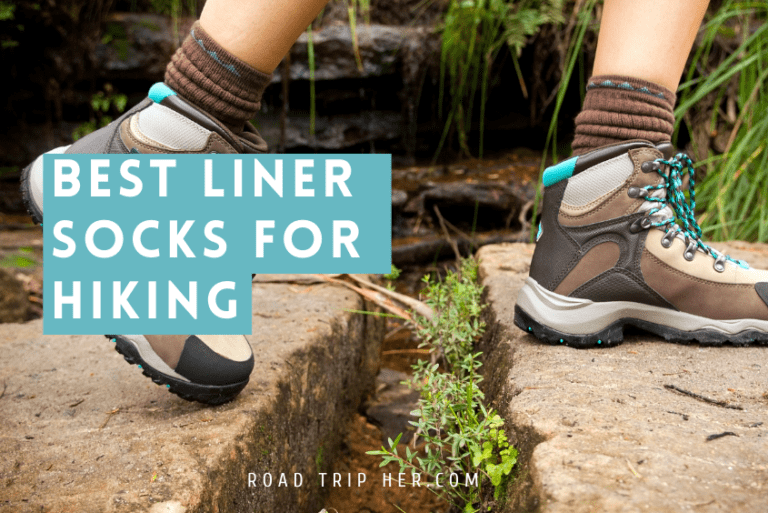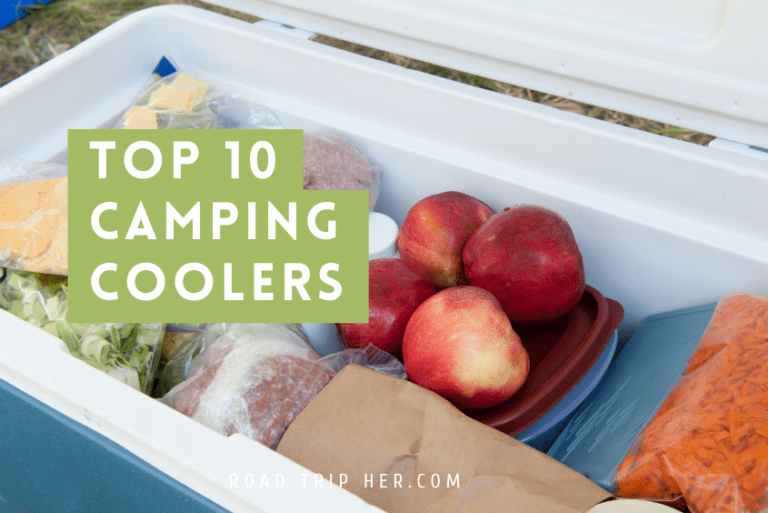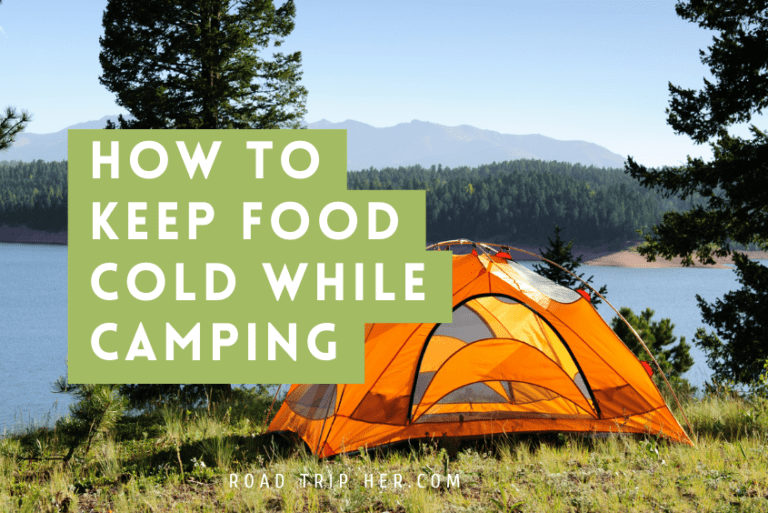Safe Car Camping in Bear Country
Car camping in bear country can be an exciting experience, but it also requires caution and careful preparation. Sharing the great outdoors with bears can bring you closer to nature, but it also comes with the responsibility of understanding bear behavior and taking necessary precautions to ensure your safety and the well-being of the bears.
In this blog, we will explore everything you need to know about safe car camping in bear country, from understanding bear behavior to selecting a safe campsite, and dealing with bears at your campsite. So, let’s get started on this bear adventure!
Contents
Understanding Bear Behavior
Bears are magnificent creatures, and they play an integral role in the ecosystems they inhabit. When camping in bear country, it is essential to have a basic understanding of bear behavior to minimize the risk of bear encounters.
Bear behavior can vary depending on the type of bear, such as black bears or grizzly bears. Being aware of their behaviors, habits, and tendencies can help us coexist with bears in their natural habitat.
Why do bears approach campsites?
Bears are opportunistic animals, and they approach campsites primarily in search of food. Human food items and improperly stored garbage can be easy pickings for bears, which is why it is crucial to store food properly and take proactive measures to prevent bear encounters.
Bears have a strong sense of smell, and the scent of human food can be incredibly enticing to them, leading to their curiosity and exploration of campsites. To avoid attracting bears to your campsite, it is essential to understand why bears approach campsites and take steps to eliminate attractants.
Common bear behaviors to watch for
In bear country, it is crucial to be aware of common bear behaviors so that you can identify signs of bear presence and take appropriate precautions. Some common bear behaviors to watch for include bears sniffing around campsites, which may indicate their interest in food or human scent.
Bears roaming near campsites can also be a sign of their curiosity or search for food. Being familiar with these behaviors can help campers stay vigilant and minimize bear encounters, ensuring both human and bear safety.
Preparing for Your Camping Trip
Before embarking on your car camping adventure in bear country, it’s essential to make adequate preparations. From packing essential items to researching bear habitation in your chosen camping location, taking these steps can significantly contribute to a safe and enjoyable camping experience.
Researching about Bear Habitation in your Camping Location
Researching bear habitation in your camping location is crucial for trip planning. Different regions, such as Yellowstone National Park, Washington state, or various areas in North America, may have different bear populations.
Understanding the presence of black bears or grizzly bears in your camping area can help you tailor your preparations accordingly. Additionally, learning about any recent bear encounters or bear activity in the area can give you valuable insights into bear behavior and precautions to take.
Essential Items to Pack for Bear Country
When camping in bear country, it is crucial to pack the right gear and supplies to ensure your safety and minimize interactions with bears. Here are some essential items to pack for bear country:
- Bear spray: A canister of bear spray can be a lifesaver in case of an encounter with a bear.
- Bear canister: This specialized container helps store food and prevent bears from accessing it.
- Proper food storage: Ensure you have food storage containers or bags that can deter bears and other wildlife.
- First aid kit: Be prepared for any emergencies by carrying a well-stocked first aid kit.
- Camping whistle: A whistle can help you alert others in case of distress or bear encounters.
Selecting a Safe Campsite in Bear Country
Choosing the right campsite is crucial when camping in bear country. Remote locations, clean camps, and considering factors specific to bear country can help minimize bear encounters and create a safe camping environment.
Ideal Characteristics of a Bear-Safe Campsite
An ideal bear-safe campsite possesses certain characteristics that minimize bear interactions and ensure camper safety. Look for a campsite with a tree trunk strong enough to hang food, keeping it at a great distance from camp.
Additionally, choose a campsite with a good scent flow, so food smells are less likely to linger and attract bears. Avoid camping near potential bear hotspots, such as areas where bears may frequently search for food or travel through.
Avoiding Potential Bear Hotspots
To minimize bear encounters, it’s important to avoid potential bear hotspots when selecting your campsite. These hotspots could be areas with easy food access or locations bears frequent.
By being aware of bear habits, you can choose camping locations that are less likely to attract bears and prioritize your safety. Avoid camping near active bear hangouts, next to berry patches, or in dense brushy areas where bears may be seeking shelter.
Establishing a Bear-Proof Campsite
Once you have selected a safe campsite, it’s time to set up camp and take measures to deter bears from approaching. Creating a bear-proof campsite involves various steps, such as keeping your camp clean and ensuring food storage techniques that prevent bear intrusion.
Setting up Camp to Deter Bears
To set up camp and deter bears, it’s essential to keep a clean camp by properly disposing of food, trash, and waste. Bears have an incredibly strong sense of smell, even residual smells of human food can attract them.
Clean camp utensils and dishes right after eating, minimizing residual smells that could attract bears. Properly store food, pet food, and other scented items in bear canisters or hang them high between trees, away from camp, using bear hang techniques.
Food Storage Techniques to Prevent Bear Intrusion
Proper food storage techniques are crucial in preventing bear intrusion at your campsite. Here are some food storage tips to minimize bear encounters:
- Store food items, coolers, toothpaste, and deodorant in bear canisters to prevent bears from accessing them.
- Keep human food, pet food, and strong-scent items away from sleeping areas to avoid attracting bears to your campsite.
- Properly store food supply, leftovers, and snacks in airtight containers to minimize food smells that may lure bears.
- Dispose of food packaging, wrappers, and crumbs in bear-proof dumpsters or pack them out of the campsite.
- Minimize food smells: Avoid cooking strong-smelling foods or bringing food items with strong odors to reduce the risk of bears being attracted to your campsite.
Securing Your Vehicle from Bears
While camping in bear country, it’s important to secure your vehicle from bears, as they can be attracted to strong food smells or other scented items in your car. To safeguard your vehicle:
- Lock all car doors and windows, sealing residual food smells inside the car.
- Remove food, snacks, and coolers from the car, storing them properly in bear canisters or hang bags.
- Keep human food, pet food, and critter-attracting items out of sight inside the car to reduce the scent wafting outside.
- Avoid leaving food, snacks, and strong-scent items in the car overnight, even if it’s parked near your campsite.
- When choosing a parking spot, opt for bear-safe locations away from bear food sources, trailheads, or popular bear hangouts.
Dealing with Bears at Your Campsite
Knowing how to handle bear encounters at your campsite is essential for your safety and the well-being of the bears. By understanding bear behavior and following recommended procedures, you can minimize risks and avoid potential conflicts.
What to do when a Bear Approaches
If a bear approaches your campsite, there are several steps you can take to ensure both your safety and the bear’s. Stand your ground, make yourself look bigger, and avoid direct eye contact with the bear, as it may perceive it as a threat. Slowly back away, giving the bear space to retreat without feeling threatened. While doing so, maintain eye contact and remain calm, speaking softly to let the bear know you are not a threat.
Using Bear Spray Effectively
Bear spray can be a highly effective tool in deterring bear encounters and ensuring your safety. To use bear spray effectively:
- Carry bear spray in an easily accessible holster, not inside your backpack.
- Use bear spray only as a last resort when a bear is approaching aggressively, maintaining a safe distance.
- Aim bear spray slightly downward, spray in short bursts to create a barrier between you and the bear.
- Spray bear spray in the bear’s direction, not directly at the bear, while keeping a safe distance.
- Practice using bear spray: Familiarize yourself with operating bear spray so that you can effectively use it in case of an encounter.
Safeguarding Yourself and Your Campsite
Ensuring your safety and the safety of your campsite goes beyond the initial preparations. By developing an emergency response plan and taking precautions for sleeping in bear country, you can continue to safeguard yourself throughout your camping trip.
Developing an Emergency Response Plan
Developing an emergency response plan is vital when camping in bear country. This plan should include actions to take during bear encounters, ensuring everyone in your camping group knows their roles and steps to follow.
Practice bear safety drills, including bear spray use, bear encounters, and campsite evacuation, so that everyone is prepared for potential bear encounters. Establish communication methods for alerting others to bear encounters and emergencies, and familiarize yourself with emergency services, such as park rangers or the National Park Service, in case you need assistance.
Safety Measures for Sleeping in Bear Country
Taking safety measures while sleeping in bear country is crucial for minimizing bear encounters. Sleep away from food storage, cooking, and eating areas to reduce food smells near your campsite. Keep bear spray, air horns, or other bear deterrents within easy reach while sleeping, so you can quickly access them if needed.
Secure your sleeping area, whether it’s a tent or shelter, keeping it clean and free of strong smells that may attract bears. Follow bear country guidelines, including proper food storage, campsite cleanliness, and bear safety measures, to ensure a safe and peaceful night’s sleep.
What if a Bear Has Entered My Car?
If a bear has entered your car, it’s essential to stay calm and avoid confronting the bear. Give the bear plenty of space to exit on its own by backing away from the car.
Do not approach the car until you are sure the bear has left. To encourage the bear to leave, you can use a bear horn or air horn. Use these tools from a safe distance and remember to prioritize your safety throughout the process.
Conclusion
To ensure a safe and enjoyable camping trip in bear country, it is crucial to understand bear behavior and take necessary precautions. Bears are curious creatures, and they may approach campsites in search of food or out of sheer curiosity.
By researching about bear habitation in your camping location and packing essential items such as bear-resistant containers and bear spray, you can greatly reduce the risk of bear encounters.
Additionally, selecting a safe campsite with ideal characteristics and properly securing your campsite from bears is essential. If you do encounter a bear, remain calm and follow proper safety measures such as using bear spray effectively.
Remember, it is our responsibility to coexist peacefully with wildlife and protect both ourselves and these magnificent creatures. So, make sure to always practice safe camping in bear country.







